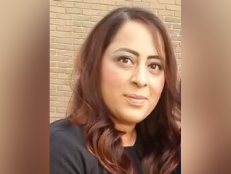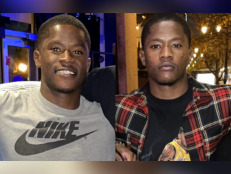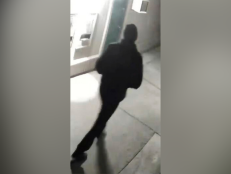5 Facts About “The Dating Game Killer” Rodney Alcala
He had already murdered by the time he appeared as a contestant on the show in 1978.
In the late 1970s, Rodney Alcala had a fleeting brush with fame as a contestant on the television show The Dating Game, which featured people looking for love. Bachelorette Cheryl Bradshaw selected Alcala as her blind date, but he later became infamous throughout the United States after he was convicted of kidnapping, raping, torturing and murdering multiple women.
PHOTO: Bettmann / Getty Contributor
Alcala Already Had A Dark History When He Made His TV Debut
In 1972, Alcala was accused of raping and nearly killing 8-year-old Tali Shapiro four years earlier, CBS News reported.
By the time Alcala was caught, Shapiro and her parents had left the country, leaving no witnesses to testify against him. Police were forced to offer Alcala a plea deal, and he was convicted of child molestation, a lesser charge. He served 34 months in prison before he was paroled in 1974.
Alcala was in the middle of a killing spree when he went on ABC’s The Dating Game as Bachelor No. 1 in September 1978.
PHOTO: Convicted for murder twice before but reversed on appeal, Rodney Alcala appearing in Orange County Superior Court in October 2003 for arraignment facing his thrid trial for alledgedly killing 12-year-old Robin Samsoe in July 1979. (Don Tormey/Los Angeles Times via Getty Images)
He Made A Bad Impression On His Fellow Contestants
The Dating Game host Jim Lange introduced Alcala to the show’s audience as Bachelor No. 1, a “successful photographer” and an avid skydiver and motorcyclist. While on the air, the serial killer vied for Bradshaw’s attention. Alcala initially charmed the bachelorette, but his backstage behavior eventually turned her and everyone else off.
“Oh yeah, I remember it quite clearly," Bachelor No. 2 Jed Mills later recalled. He noted the “quiet” Alcala wasn’t afraid to “interrupt” and act “obnoxious” whenever the mood struck.
"He became very unlikable and rude and imposing as though he was trying to intimidate,” said Mills. “I wound up not only not liking this guy... not wanting to be near him... he got creepier and more negative. He was a standout creepy guy in my life."
PHOTO: The Dating Game host Jim Lange in 1972 (ABC Photo Archives / Getty Images)
There Were Other Red Flags During Alcala’s Appearance on the Show
Alcala was deceptively charming on The Dating Game, using flirty interactions to win Bradshaw over.
At one point during the episode, she asked what he would be if she were to serve him as a meal. “I’m called the banana, and I look really good. Peel me,” he quipped with a big smile.
During another exchange, Bradshaw questioned Alcala: “What’s your best time?”
“The best time is at night, nighttime” he answered. “That’s the only time there is. [Morning and afternoon] are okay, but nighttime is when it really gets good.”
Armand Cerami, who was Bachelor No. 3, revealed in a 2010 interview that the audience seemed to sense there might be something off with Alcala.
“The people [in the audience] were actually snickering and even low-murmuring boos as to his answers,” he said, according to Rolling Stone.
Crime profiler Pat Brown studied Alcala's The Dating Game appearance and explained to CNN that the smooth-talking serial killer "was aware that he could say things that were considered sexy and funny and the girl would like that."
"He watched the game and he gave those answers and he won, so he learned some tricks. But a psychopath's true nature comes seeping through,” she said. “This guy was going on the show to prove how special and wonderful he was. And his ego was riding on it."
PHOTO: Bettmann / Getty Contributor
Alcala’s Dating Game Date Refused To Go Out With Him
After Bradshaw chose Alcala as the winner, the two were supposed to spend time together taking tennis lessons and spending the day at Magic Mountain amusement park. She later said she decided to bow out of the date after getting an “uneasy” feeling about Alcala off-camera.
“I started to feel ill. He was acting really creepy,” she told The Sunday Telegraph in 2012. “I turned down his offer. I didn’t want to see him again.”
Brown said Bradshaw jilting Alcala could have brought out his psychopathic personality.
"That is something he would not take too well,” the crime profiler noted. “[Psychopaths] don't understand the rejection. They think that something is wrong with that girl: 'She played me. She played hard to get.'"
PHOTO: Rodney Alcala, acting as his own attorney, on Feb. 2, 2010 in Santa Ana, CA, displays gold earrings during his opening statements that he said are similar to the earrings in question in the Robin Samsoe case. (Michael Goulding/MediaNews Group/Orange County Register via Getty Images)
Alcala May Have Killed Over 100 Women Before He Was Caught
Alcala, now 76, is currently living on death row in Northern California’s San Quentin State Prison for murdering multiple women in the 1970s.
In 2010, Alcala, who has been imprisoned for over four decades, was officially found guilty and sentenced to death for the murders of Jill Barcomb, 18, and Georgia Wixted, 27, in 1977; Charlotte Lamb, 31, in 1978; and Jill Parenteau, 21, and Robin Samsoe, 12, in 1979.
In December 2012, he pleaded guilty in New York to the 1971 murder of Cornelia Crilley, a 23-year-old TWA flight attendant, and the 1977 slaying of musician and artist Ellen Hover, also 23, CBS News reported. He was sentenced to two concurrent terms in prison of 25 years to life and returned to San Quentin’s death row.
Almost four years later, in 2016, Alcala’s collection of photographs connected him to the 1977 slaying cold case of 28-year-old Christine Thornton, who was around six months pregnant when she died. The serial killer faced another first-degree murder charge in Wyoming, but state officials opted to keep Alcala imprisoned on California’s death row instead of extraditing him, the Casper Star Tribune reported.
Authorities believe Alcala could have stolen the lives of as many as 130 people before he was caught. The serial killer often photographed women and children, and authorities believe that his collection of pictures may include the faces of murder victims who have yet to be unidentified.
PHOTO: Projected images of some of Alcala's victims (Ted Soqui/Corbis via Getty Images)















